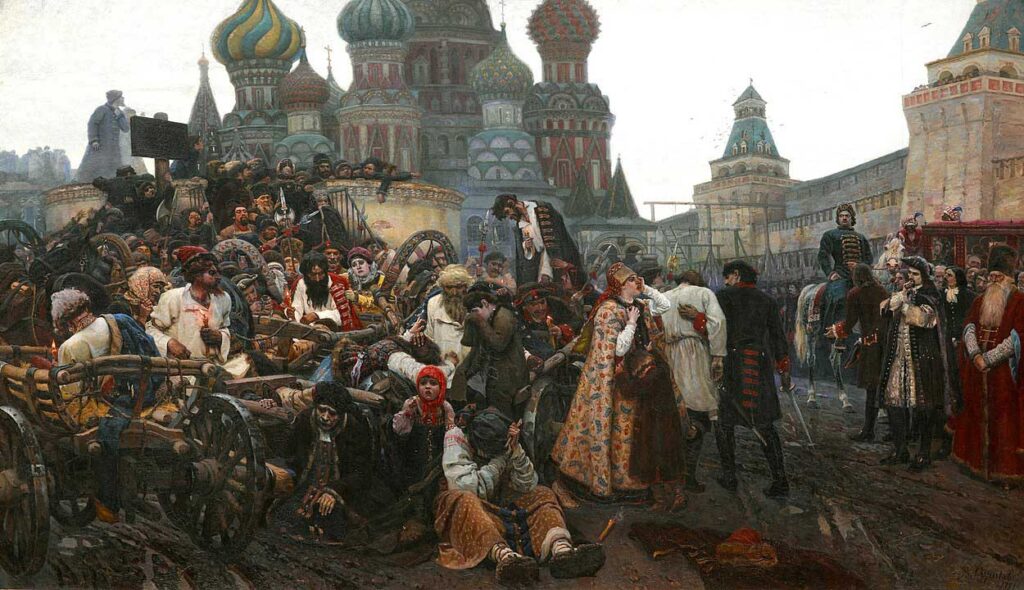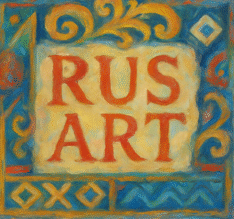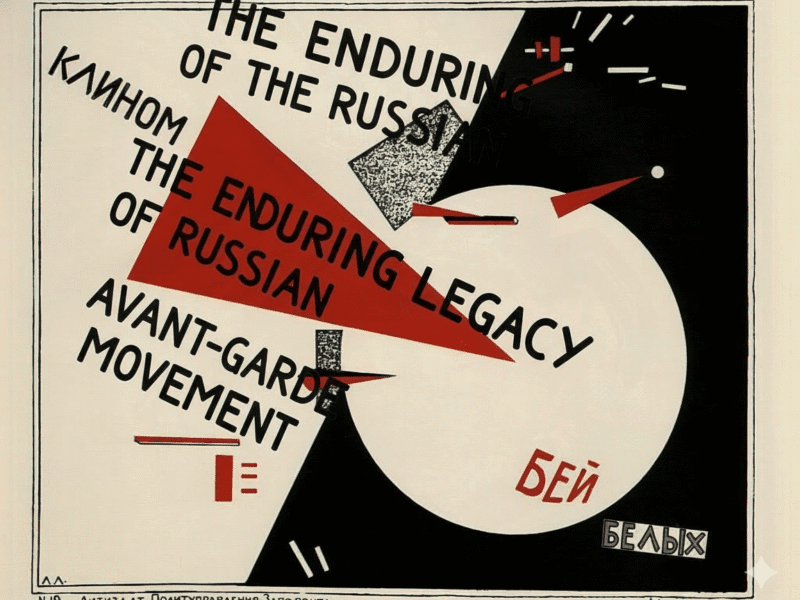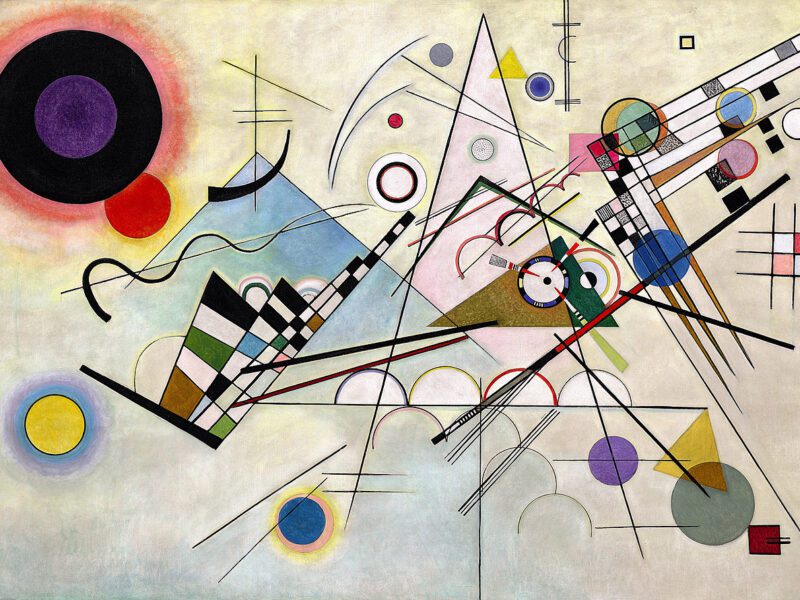The 19th century marked a transformative period in Russian art history as artists began rejecting idealized academic traditions in favor of depicting everyday life with uncompromising honesty. This shift toward realism coincided with intense social and political upheaval, creating a uniquely Russian artistic movement that captured both the beauty and harsh realities of life under tsarist rule. From its origins in the 1850s through the revolutionary period, Russian Realism represented not just an artistic style but a profound cultural statement about Russian identity, social conditions, and national consciousness.
Origins of Russian Realism
Russian Realism emerged in the mid-19th century as a reaction against the prevailing Romanticism and Neoclassicism of the Imperial Academy of Arts. The movement gained momentum when fourteen students protested academic restrictions by leaving the Academy in 1863, forming the “Peredvizhniki” (The Wanderers or Itinerants). This collective sought to create art accessible to ordinary Russians rather than just the aristocracy.
The cultural climate that birthed Russian Realism was significantly influenced by literary giants like Nikolai Gogol, Ivan Turgenev, and Fyodor Dostoevsky, whose works exposed social inequalities and celebrated Russian folk culture. Their unflinching portraits of Russian life inspired visual artists to adopt similar approaches.
Early realist painters began focusing on scenes from provincial life, peasant labor, and urban poverty—subjects previously deemed unworthy of artistic attention. This shift reflected growing dissatisfaction with the social order and a desire to document authentic Russian experiences.
The Peredvizhniki Movement
The Peredvizhniki (Wanderers) Society transformed Russian art through their traveling exhibitions that brought art directly to the people across the vast Russian Empire. Founded in 1870 by Ivan Kramskoy, the group included masters like Ilya Repin, Vasily Surikov, and Vasily Perov.
What distinguished the Peredvizhniki was their commitment to social commentary. Their paintings often depicted the struggles of peasants, workers, and other marginalized groups, highlighting economic disparities and criticizing social injustices. This approach earned them both praise from progressives and censure from conservative authorities.
The movement established a uniquely Russian approach to realism that differed from Western European variants by emphasizing moral and ethical dimensions alongside technical skill. Their work celebrated Russian landscapes, historical moments, and cultural traditions while simultaneously questioning aspects of national life that needed reform.
Through their approach, the Peredvizhniki helped develop a visual language that expressed Russian national identity independent of Western influences. Their exhibitions became cultural events where Russians from various social classes could engage with art that reflected their own experiences.
Key Artists and Masterworks
Ilya Repin stands as perhaps the greatest master of Russian Realism. His monumental work “Barge Haulers on the Volga” (1870-1873) depicts laborers dragging a barge upstream—a powerful metaphor for Russian society. Repin’s ability to combine technical excellence with emotional depth made him the movement’s most celebrated figure. His other significant works include “Religious Procession in Kursk Governorate” and “They Did Not Expect Him,” each capturing pivotal aspects of Russian life.
Vasily Surikov specialized in historical paintings that reexamined Russia’s past with psychological insight. Works like “Boyarynya Morozova” and “Morning of the Execution of the Streltsy” brought historical events to life with remarkable authenticity and emotional power.
Ivan Shishkin established himself as the preeminent landscape painter of his generation. His forest scenes captured the majestic beauty and spiritual significance of Russian wilderness. “Morning in a Pine Forest” remains among the most recognized Russian paintings.
Vasily Perov focused on social criticism through works like “Troika” and “The Last Tavern at the City Gate,” which depicted the hardships of ordinary Russians with unflinching honesty. His attention to psychological detail and social conditions made his work particularly powerful.

Themes and Subject Matter
Russian Realist painters developed several distinctive thematic categories that defined the movement. Rural life and peasant subjects featured prominently, with artists documenting agricultural work, village gatherings, and folk customs. These paintings often contained subtle political commentary about rural poverty and exploitation.
Urban scenes and social criticism emerged as another crucial theme. Artists captured the rapidly changing cities, showing both technological advancement and the human cost of industrialization. Works depicting alcoholism, poverty, and crime served as visual social critiques.
Historical subjects allowed artists to comment on contemporary issues through historical parallels. By depicting crucial moments from Russian history, painters subtly addressed current political situations while avoiding direct censorship.
Religious life and spiritual themes maintained importance despite the movement’s secular orientation. Artists portrayed religious processions, monastic life, and ordinary people’s devotion, exploring the complex relationship between Orthodox Christianity and Russian identity.
The natural landscape served as both subject and symbol, with painters creating panoramic vistas that celebrated Russia’s vast wilderness while also expressing national pride through environmental representation.
Technical Innovations
Russian Realist painters developed distinctive techniques that set their work apart from both academic painting and Western European realism. They typically used earthy, subdued color palettes that reflected the northern light conditions and conveyed authenticity rather than idealization.
Brushwork became increasingly varied and expressive, with some artists developing thick, textured applications while others maintained smoother finishes with meticulous attention to detail. This technical versatility allowed for both emotional expression and documentary precision.
Light and shadow treatment evolved to capture the unique quality of Russian light, particularly the distinctive northern illumination with its soft diffusion and stark seasonal contrasts. Artists became skilled at rendering the specific atmospheric conditions of Russian environments.
Composition strategies emphasized narrative clarity while avoiding theatrical arrangements. Painters often used asymmetrical framing, unexpected perspectives, and careful spatial organization to direct viewer attention and enhance storytelling.
Studios and workshops throughout Russia developed specialized techniques for capturing particular subjects, with artists sharing methods for rendering snow, forests, interior light, and human expressions characteristic of Russian life.
Social and Political Context
The artistic developments of Russian Realism occurred against a backdrop of profound social change. The 1861 emancipation of serfs dramatically altered Russian society, creating new classes and social mobility while also generating new forms of exploitation and poverty that became subjects for artistic examination.
Political reforms and reaction under successive tsars created a complex environment for artists. Periods of relative liberalization alternated with crackdowns on dissent, affecting what subjects could be portrayed and how critical messages might be encoded in seemingly innocent scenes.
The rise of revolutionary movements directly influenced many realist painters, who sympathized with calls for social justice. While few artists openly advocated revolution, many expressed solidarity with the suffering of ordinary Russians through their choice of subjects and emotional approach.
The relationship between artists and patrons evolved significantly during this period. As wealthy merchants replaced aristocrats as primary art patrons, taste shifted toward works depicting Russian subjects rather than European styles, encouraging the realist approach.
State censorship remained a constant challenge that artists navigated through various strategies, including historical displacement (using historical scenes to comment on current issues) and symbolic representation that allowed for multiple interpretations.

Russian Realism and National Identity
Russian Realist art played a crucial role in defining national consciousness during a period of intense debate about Russia’s cultural identity. The movement helped establish visual representations of “Russianness” through both subject matter and stylistic approaches.
The tension between Slavophiles (who celebrated distinctive Russian traditions) and Westernizers (who advocated European integration) found expression in paintings that either emphasized Russia’s unique character or demonstrated connections to broader European movements. Many realist painters found middle ground by adapting Western techniques to Russian themes.
Folk art and traditional crafts significantly influenced realist painters, who incorporated elements of lubok (popular prints), icon painting, and decorative motifs into their work. This integration of folk traditions with academic training created a distinctive Russian style.
Regional diversity across the vast Russian Empire appeared in paintings that documented varied landscapes, architectural styles, ethnic groups, and local customs. This visual catalog helped create a composite image of Russia’s cultural richness.
By the late 19th century, Russian Realism had become recognized internationally, with exhibitions in Paris, Vienna, and other European capitals showcasing Russian artistic achievements and changing foreign perceptions of Russian culture.
Realism in Russian Literature and Music
The realist movement transcended visual arts, creating powerful connections between painting, literature, and music during this period. Literary realism, championed by writers like Leo Tolstoy and Ivan Turgenev, shared themes and approaches with painting, often directly inspiring visual works.
Collaborative projects between writers, musicians, and painters became common. Illustrations for literary works, set designs for operas, and portraits of cultural figures helped create an integrated cultural environment where different art forms reinforced each other.
Music found visual expression through paintings depicting folk musicians, concerts, and musical themes. Meanwhile, composers like Modest Mussorgsky created works directly inspired by paintings, as in his famous “Pictures at an Exhibition” based on Viktor Hartmann’s artwork.
Critics and cultural theorists developed interpretive frameworks that applied across artistic disciplines, emphasizing authenticity, social relevance, and national character regardless of medium. This cross-disciplinary approach strengthened the cultural impact of realism.
Patrons and Exhibition Spaces
The economics of Russian Realism revealed changing power structures in late imperial society. Pavel Tretyakov emerged as the movement’s most important patron, systematically collecting works by realist painters and eventually donating his collection to create Moscow’s Tretyakov Gallery—now home to the world’s finest collection of Russian Realist art.
New exhibition venues transformed how art reached the public. The Peredvizhniki’s traveling exhibitions brought art to provincial cities never before exposed to contemporary painting. This democratization of art access aligned with the movement’s populist ideals.
Art criticism and journals played vital roles in shaping public reception. Critics like Vladimir Stasov championed realist approaches, helping educate audiences about new artistic standards that valued truth over beauty and social relevance over classical ideals.
The expanding middle class created new markets for art, with reproductions, illustrated books, and affordable prints bringing realist images into ordinary homes. This commercial aspect helped sustain artists while spreading their visual ideas widely.
The Late Period (1890-1917)
By the 1890s, Russian Realism began evolving in response to new cultural currents. Younger artists incorporated impressionist techniques while maintaining realist subjects, creating hybrid approaches that added atmospheric effects and looser brushwork to traditional themes.
Symbolist influences introduced more psychological and spiritual dimensions into realist painting. Artists began exploring dreams, myths, and emotional states while still grounding their work in recognizable Russian settings and types.
Urban and industrial subjects gained prominence as Russia rapidly industrialized in the final tsarist decades. Paintings depicted factories, railways, and city streets with both documentary precision and aesthetic sensitivity to these new environments.
Political tensions intensified as revolutionary movements gained strength, influencing artists’ choice of subjects and emotional tone. Some painters became more explicitly political while others retreated into less controversial themes.
The 1905 Revolution marked a turning point, after which some realist painters aligned themselves with revolutionary movements while others sought to preserve traditional values through their art. This polarization reflected broader societal divisions approaching 1917.

Legacy and Influence
Russian Realism established lasting paradigms in Russian and Soviet art. Even as avant-garde movements like Suprematism and Constructivism briefly dominated after the 1917 Revolution, realist approaches eventually returned as Socialist Realism—an ideologically modified descendant of 19th-century realism.
The movement’s technical achievements and emotional depth continue to influence contemporary Russian artists, many of whom study and reference realist masterworks while addressing current themes.
International recognition of Russian Realism has grown significantly in recent decades. Major exhibitions worldwide have introduced global audiences to works previously little known outside Russia, establishing these paintings among the great achievements of 19th-century art.
Conservation efforts have preserved the physical legacy of Russian Realism. Major restoration projects at the Tretyakov Gallery, Russian Museum, and regional collections have ensured these works remain accessible to future generations.
Academic study of Russian Realism has expanded beyond formalist approaches to examine social, political, and cultural dimensions of the movement, recognizing its significance not just aesthetically but as a window into a crucial period of Russian history.
Quick Takeaways
- Russian Realism emerged in the 1850s-60s as artists rejected academic traditions to focus on authentic portrayal of everyday Russian life
- The Peredvizhniki (Wanderers) society revolutionized Russian art by bringing exhibitions directly to people across the Empire
- Masters like Ilya Repin, Vasily Surikov, and Ivan Shishkin created works that combined technical excellence with social commentary
- The movement coincided with major social changes including serf emancipation and growing revolutionary sentiment
- Russian Realist art helped define national identity by documenting diverse aspects of Russian life and landscape
- The movement maintained strong connections with literary realism and musical nationalism
- Technical innovations included approaches to color, light, and composition suited to Russian subjects
- Pavel Tretyakov’s patronage proved crucial in supporting realist artists and preserving their work
- The movement evolved in its later period (1890-1917) by incorporating elements of impressionism and symbolism
- Russian Realism’s legacy continues through Socialist Realism and its influence on contemporary Russian art
Conclusion
The Golden Age of Russian Realism represents one of art history’s most significant achievements—a movement that transcended aesthetics to become a cultural force that shaped national identity and social consciousness. From its origins in the 1850s through the revolutionary period, Russian Realism documented a society in profound transition while establishing distinctive artistic approaches that continue to resonate today.
What makes this movement particularly significant is its deep connection to the Russian experience. Unlike imported artistic styles, Russian Realism grew organically from local conditions, responding to specific social challenges and cultural traditions. The resulting works captured both the physical reality and spiritual essence of Russian life during a pivotal historical period.
Perhaps most remarkably, these artists maintained technical excellence while pursuing social relevance. They demonstrated that art could be both aesthetically accomplished and morally engaged—a lesson that remains vital for contemporary artists facing their own social challenges. In their commitment to truth-telling through art, the Russian Realists created an enduring legacy that continues to inform our understanding of art’s potential to document, critique, and ultimately transform society.
Frequently Asked Questions
What distinguishes Russian Realism from other European realist movements? Russian Realism placed greater emphasis on social commentary and national identity than its Western counterparts. It also maintained stronger connections to literary and musical developments, creating a more integrated cultural movement.
Who were the most important patrons of Russian Realist art? Pavel Tretyakov stands as the most significant patron, systematically collecting works that now form the core of Moscow’s Tretyakov Gallery. Wealthy merchants increasingly replaced aristocrats as important collectors during this period.
How did censorship affect Russian Realist painters? Artists developed strategies including historical displacement, symbolic representation, and ambiguous narratives to express critical views while avoiding direct censorship. Some works were nonetheless banned from exhibition.
What role did women play in the Russian Realist movement? While less numerous than male artists, important female painters including Nadezhda Kashina and Maria Bashkirtseva made significant contributions. Women were also frequent subjects, often portrayed with greater empathy and complexity than in earlier traditions.
How does Russian Realism relate to later Socialist Realism? Socialist Realism adopted the technical approaches and accessibility of 19th-century Realism but imposed ideological requirements that limited critical perspectives. Many methods and themes continued while the movement’s investigative spirit was constrained.
Tags: Russian art history, Peredvizhniki, Ilya Repin



